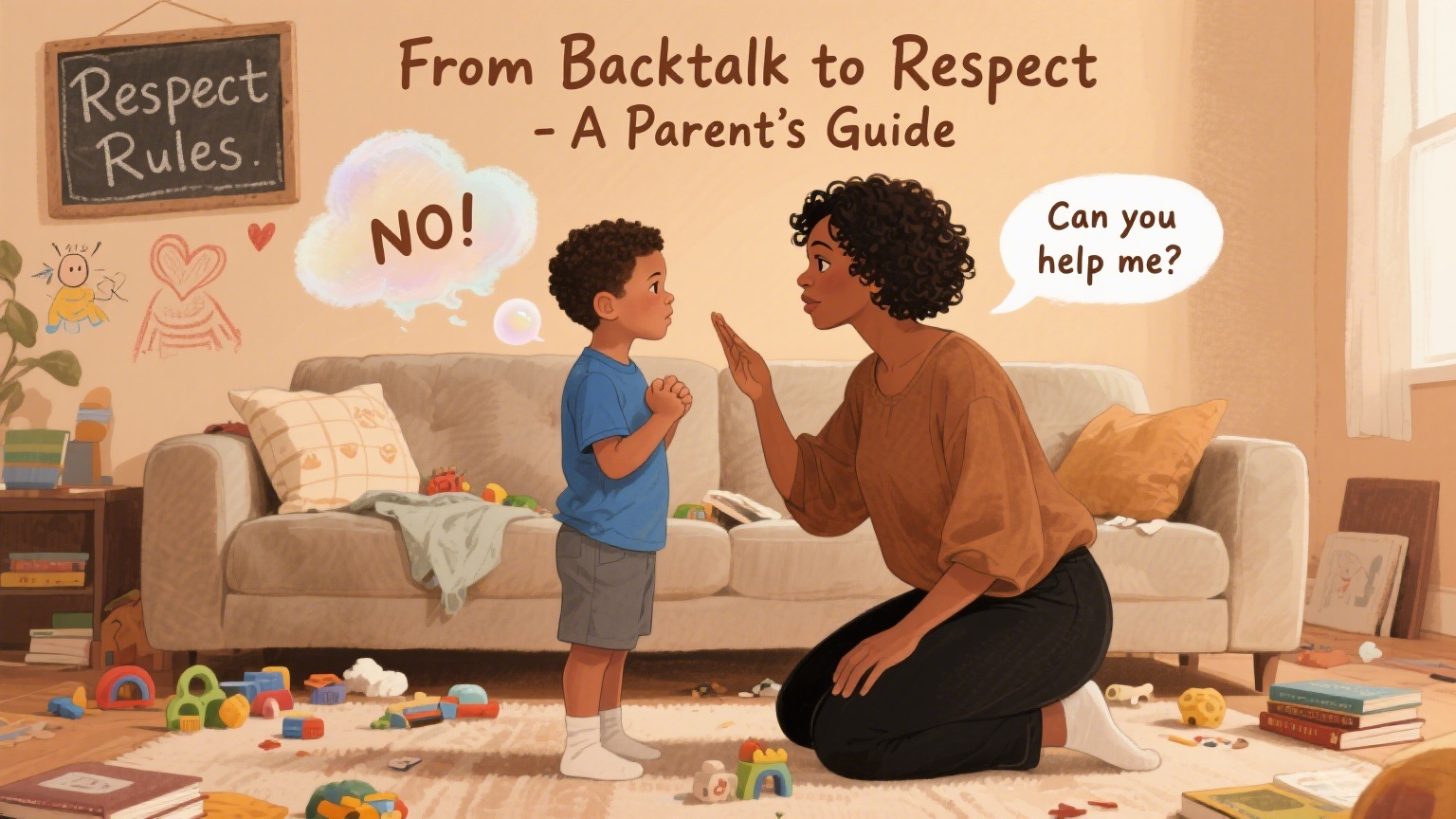Backtalk can range from harmless sass to outright defiance, but it always carries the same underlying message: “You’re not the boss of me.” While frustrating, this behavior is often a child’s way of testing boundaries or seeking attention. Here’s how to respond constructively—without power struggles or resentment.
Why Kids Backtalk
- Toddlers (2-4 yrs): Testing language limits (“No!”).
- Preschoolers (4-6 yrs): Power battles (“You can’t make me!”).
- School-age (6+ yrs): Emotional exhaustion (“Whatever!”).
Key Insight: Backtalk is behavior, not a personality flaw. Kids often mimic tones they hear from peers or adults.
What NOT to Do
❌ Overreact: Yelling escalates the conflict.
❌ Ignore completely: Misses a teaching moment.
❌ Personalize: “You’re so rude!” reinforces negativity.
5 Steps to Reduce Backtalk
1. Stay Calm & Neutral
- Example: If your child snaps, “No, YOU do it!”
- Respond: “Try again. Say, ‘Can you help me?’” (Like a robot—no emotional fuel.)
2. Give a “Do-Over”
- For younger kids: “Let’s practice a polite way to say that.”
- For older kids: “Take space and return when you’re ready to speak kindly.”
3. Withhold Attention
- If backtalk is for reaction, say: “I listen to respectful words,” and walk away.
- Praise polite requests immediately: “Thank you for asking nicely!”
4. Set Consistent Limits
- Home rule: “We speak kindly, even when upset.”
- Consequence: “If you’re rude, your tablet time ends early.”
5. Model Respect
- Avoid sarcasm or demands (“Because I said so!”).
- Show how you handle frustration: “I’m feeling upset, so I’ll take a breath first.”
Long-Term Solutions
- Teach “Feeling Words”: “Instead of ‘Shut up!’, say ‘I need quiet time.’”
- Role-Play: Practice respectful responses to common triggers.
- Check Your Behavior: Kids copy tone. Would you tolerate your words from a coworker?
“Discipline is about teaching, not punishment.”
— Keep the goal in mind: A child who learns self-control, not fear.








